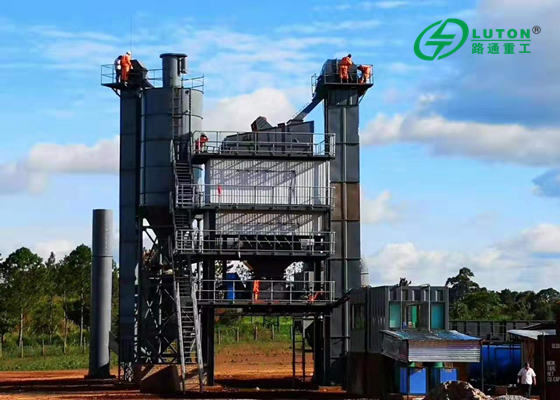Asphalt mixing plant can also be called asphalt concrete mixing plant and asphalt concrete batching plant. It refers to the complete set of equipment used for batch production of asphalt concrete. According to the mixing mode, it can be divided into forced intermittent type and continuous production type; According to the mode of transportation, it can be divided into fixed, semi fixed and mobile.
You can browse the Lutonasphaltplant to learn more asphalt equipment.

During the first installation (or installation after relocation) of the asphalt plant, attention must be paid to the commissioning steps. The correct commissioning steps can avoid some unnecessary detours and save production materials.
After completing the manual test run and burner ignition test run of each part, the next main thing is the metering system commissioning and automatic mixing commissioning. The metering system commissioning and automatic mixing commissioning are very important, which are generally carried out in the following order:
1.Manually operate and check the action of each weighing door and bin door. Firstly, manually operate and check whether each aggregate bin door acts normally, whether the aggregate weighing door acts normally, whether the powder weighing door acts normally, and whether the powder weighing door acts normally, then operate and check whether the asphalt weighing door and jet pump act normally, and then jog and check whether the asphalt weighing door (that is, the asphalt weighing door) acts normally. After all these are confirmed to be normal, proceed to the next step of commissioning;
2.Calibrate scale. Use weights to check the aggregate scale, powder scale and asphalt scale, and confirm that the three scales are accurate and meet the measurement accuracy;
3.Start the mixing plant and stir some dry aggregates, stop the machine until there are three kinds of aggregates in the full bin, and keep the air compressor and mixer motor running;
4.Manual metering test. Manually measure the aggregate scale, powder scale and asphalt scale in turn. It is required that the measuring amount of each scale should be controlled according to the mix proportion provided by the laboratory. The total amount of each scale should only account for 50% of the normal production. Check whether the measuring system displays normally. Then manually mix and (after the materials on the scale are discharged) put the mixing pot away. If problems are found at this time, timely handle and check them. If everything is normal, go to the next step of debugging;
5.Dry aggregate automatic mixing test. Set the formula according to the target mix proportion (the total amount of each plate is input according to 60% of the normal production volume of each plate), but set the asphalt volume to zero, set the production volume of about 3 plates, start automatic mixing, and observe whether the measurement of the aggregate scale and the powder scale is accurate under the automatic mixing state, and whether the actions of each step are normal (during this period, the laboratory can take samples to check whether the mix proportion of the aggregate powder meets the requirements). After confirming that it is normal, proceed to the next commissioning;
6.Automatic mixing test of black material. The formula is set according to the target mix proportion. This time, the asphalt amount is added, about 3 plates of production are set, and the automatic mixing is started again. Now, the main check is whether the action and measurement of the asphalt scale are normal under the automatic state. If it is normal, the laboratory can take the finished material to detect the asphalt content.
So far, the main commissioning of the asphalt station has been basically completed. If the finished materials do not meet the target mix ratio, the input mix ratio will be adjusted.